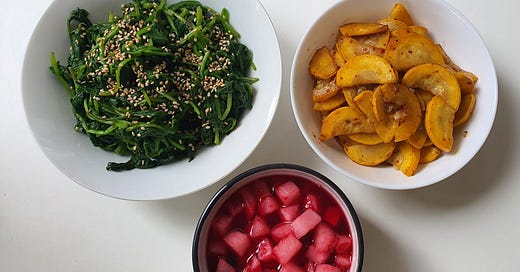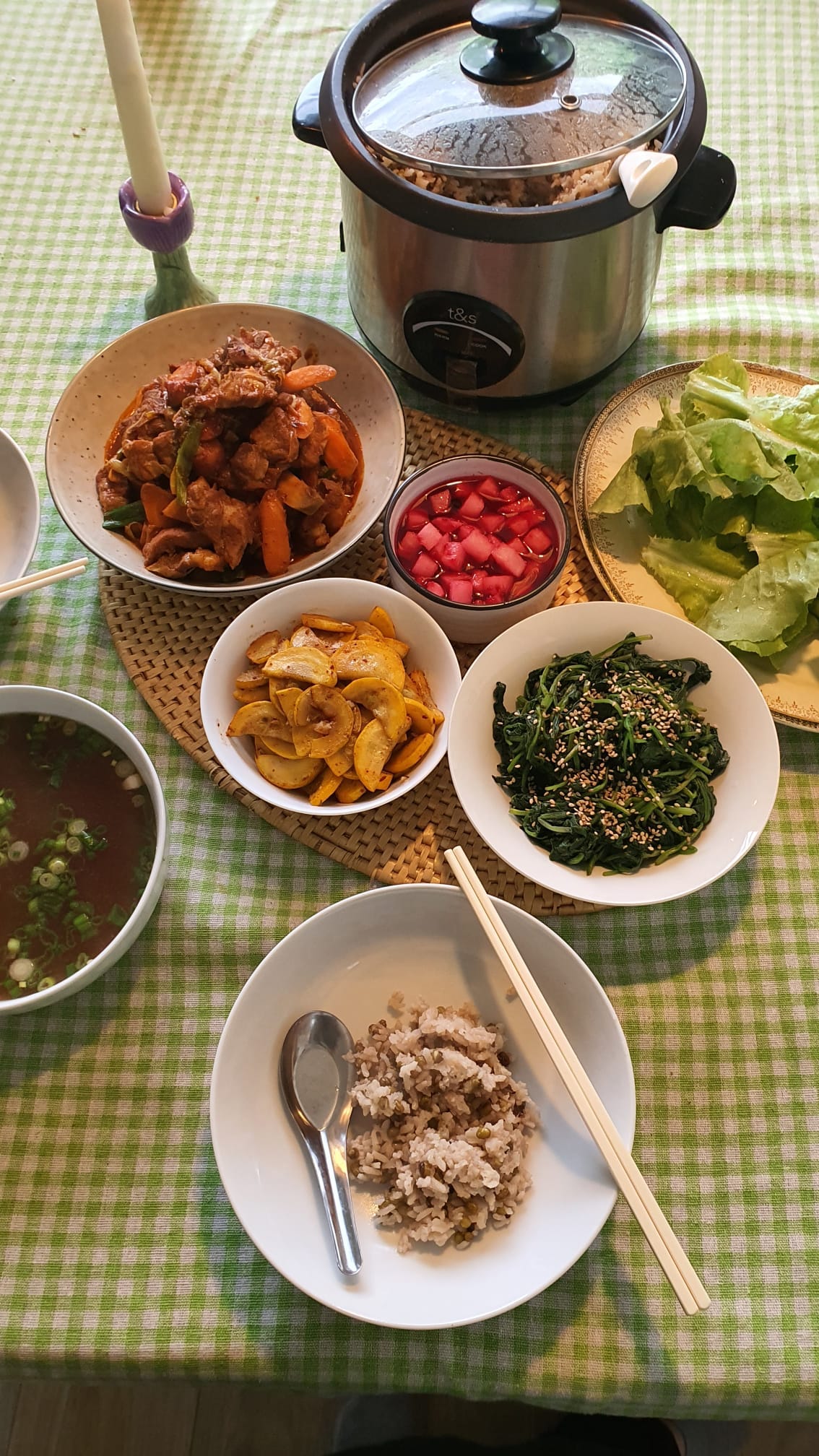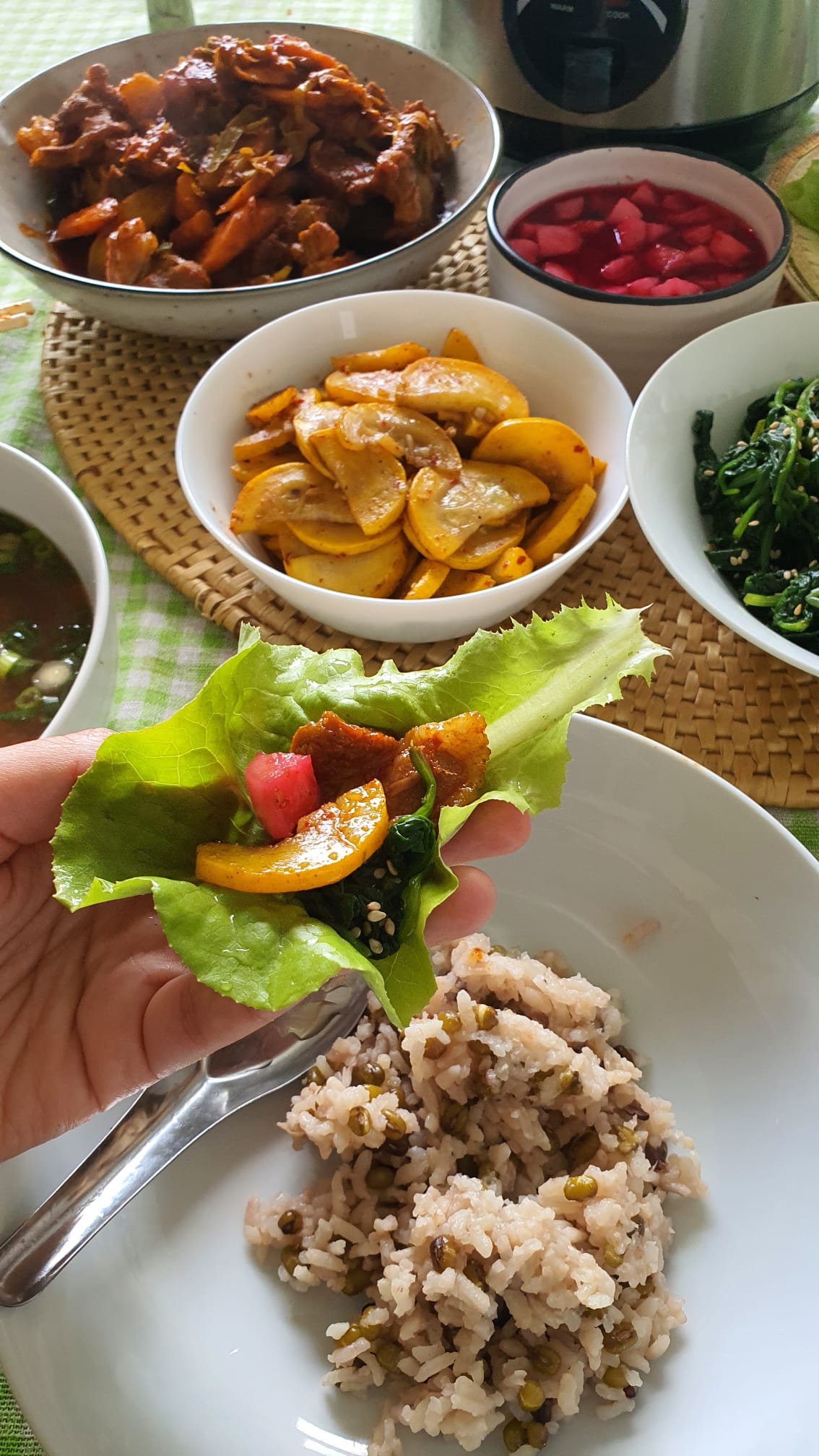Welcome to Singapore Noodles, a celebration of Asian culinary traditions and food cultures. Every week, you’ll be receiving historical tidbits, personal stories, and recipes delivered straight to your inbox. Archived recipes and other content can be found on the index. My cookbooks Wet Market to Table and PlantAsia are available for purchase here and here respectively. Thank you for being here, and enjoy this week’s post. ✨
It’s officially summertime here in the Netherlands and this means that our little backyard garden is bursting with produce. Our lettuce, in particular, has been growing so quickly and it’s been a constant challenge thinking up new ways for us to enjoy them. Korean ssams—where grilled meats are wrapped in lettuce leaves with rice and ssamjang—and bánh xèo are standard go-tos for us, but more recently I’ve learnt about dakgalbi. Originally developed as an affordable meal for students and workers in the 1960s, this is an all-in-one Korean dish, where marinated chicken is cooked with vegetables and rice cakes on large griddles. With an eye on maximising our garden produce, I omitted the rice cakes and prepared it with a trio of vegetables: carrot, leek, and sweet potato. Alongside, we had rice, lettuce, a few of my favourite banchan (vegetable side dishes), and a simple miso soup.
I often prepare these three banchan because they’re quick and easy, use ingredients commonly found in most supermarkets, and their simple flavors complement a wide variety of Asian dishes.
BABY SPINACH NAMUL
While you can use regular spinach, I always use baby spinach for this because it’s convenient and often has a much silkier texture. My mom really enjoyed this when I prepared this for her.
Makes 4 to 6 servings. | Wash and drain 600g baby spinach. Place the washed spinach directly in a large pot and set over high heat. Cook, stirring occasionally, for about 5 minutes, or until the spinach wilts down completely. Transfer the spinach into a large bowl of cool water to arrest the cooking and cool the spinach down completely. Drain in a colander. Working a handful at a time, squeeze out excess liquid from the cooked spinach. Place the spinach in a large bowl and mix in ½ tablespoon sesame oil and ½ tablespoon soy sauce by hand. Transfer to a serving dish and sprinkle with toasted sesame seeds.
ZUCCHINI BOKKEUM
Both yellow or green zucchinis can be used in this dish, but I would go for yellow if you’re serving this alongside the baby spinach namul. I love the texture of zucchini in this dish, a little firmer on the outer ring, tender and slightly gelatinous on the inside. Taking the time to develop colour on the zucchini also creates a slightly grilled flavour that I love.
Makes 3 to 4 servings | Trim 1 zucchini and cut it into half-moons. Heat 1½ tablespoons oil in a frying pan and add the zucchini. Fry over high heat until the zucchini softens and takes on some colour. Turn the heat down to low and add 2 minced cloves of garlic, 1 tablespoon fish sauce (or soy sauce), and 1 teaspoon gochugaru (or mild chilli flakes). Fry for 1 minute and turn off the heat. Serve.
PICKLED DAIKON
This is a standard daikon pickle known as “chicken mu” to Koreans, since it is typically served as an accompaniment to fried chicken. I like jazzing it up with a little freshly grated beetroot for colour. A great palate cleanser, especially if you have rich grilled meats or stews. If you can’t have daikon, you can use kohlrabi or even carrot.
Makes 4 to 6 servings | In a small pot, combine 3 tablespoons vinegar, 3 tablespoons sugar, 3 tablespoons water, 3 teaspoons grated beetroot, and 2 teaspoons salt. Heat until the sugar melts, then turn off the heat. Add 225g peeled and diced daikon and toss well. Taste and season with more salt to taste, if desired. Let the daikon pickle in the liquid for at least 15 minutes, stirring once in a while.
DAKGALBI
What intrigued me most about dakgalbi is that while the classic marinade is based on gochujang (Korean red chili paste), gochugaru (Korean chili flakes), soy sauce, and honey, some variations include curry powder for added complexity. Since I always keep curry powder in my cupboard, I was eager to try this twist—and it worked surprisingly well, reminding me a little of Japanese curry. This recipe comes together in under half an hour, and it’s delicious with either chicken or pork.
Makes 3 to 4 servings






